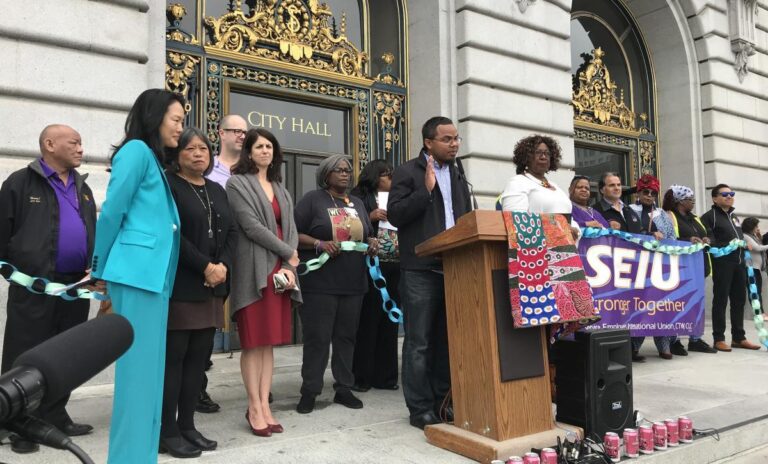San Francisco has long been known for its robust public sector, but just how large is the city’s government workforce compared to other major municipalities? A recent analysis sheds light on whether San Francisco employs an unusually high number of public workers, offering a data-driven perspective on the city’s staffing levels. As debates around municipal budgets and public services intensify, understanding where San Francisco stands in comparison to peer cities is crucial. This report from the San Francisco Chronicle delves into the numbers behind the headlines, revealing key insights about the size and scope of the city’s government workforce.
San Francisco Government Workforce Compared to Other Cities
San Francisco’s government workforce size reveals an intriguing portrait when set against the backdrop of comparable U.S. cities. Despite its reputation for robust public services, the city’s employee count aligns closely with metropolises like Seattle and Boston, rather than exceeding them. This challenges the notion that San Francisco employs an unusually large number of public workers relative to its population and infrastructure demands.
Key factors defining these workforce figures include:
- Emphasis on public safety and transit sectors
- High living costs leading to competitive salaries and retention strategies
- City-specific programs addressing homelessness and housing
| City | Population (millions) | Government Employees (thousands) | Employees per 1,000 Residents |
|---|---|---|---|
| San Francisco | 0.88 | 30 | 34.1 |
| Seattle | 0.75 | 25 | 33.3 |
| Boston | 0.69 | 22 | 31.9 |
| Denver | 0.73 | 20 | 27.4 |
Analysis of Sector Distribution Reveals Staffing Priorities
Analyzing the San Francisco government workforce reveals clear staffing priorities aligned with public service demands and urban challenges. The largest sector by employment remains public safety, where emergency responders and law enforcement officers make up a substantial share of city workers. This focus reflects ongoing commitments to maintaining community safety amidst complex socio-economic conditions. Meanwhile, public health services have seen notable growth, possibly in response to heightened awareness around health infrastructure triggered by recent global health concerns.
Beyond these dominant areas, the city’s investment in administrative and infrastructure-related roles paints a comprehensive picture of its operational priorities. The distribution showcases an emphasis on not only frontline services but also the essential behind-the-scenes functions that facilitate smooth government operations. Below is a breakdown of key department staffing percentages, highlighting where human resources are concentrated within the municipal framework:
| Sector | Percentage of Total Workforce |
|---|---|
| Public Safety | 38% |
| Public Health & Human Services | 22% |
| Administrative & Support Services | 18% |
| Infrastructure & Maintenance | 12% |
| Environmental & Recreation Services | 10% |
Implications for City Budget and Public Services
San Francisco’s workforce size directly influences its fiscal policies and the scope of public services delivered to residents. A larger public sector payroll typically means higher employee benefits and pensions costs, which can strain the city’s budget. This dynamic leads officials to make complex budgetary decisions, balancing the need to support a competent workforce while managing expenditures to prevent tax hikes or funding cuts in critical areas like education and public safety.
Resource allocation challenges become apparent as the city grapples with demands in key services:
- Affordable housing initiatives
- Homelessness support programs
- Public transportation maintenance and expansion
- Emergency response and health services
| Department | % of Total City Workforce | Budget Impact |
|---|---|---|
| Public Safety | 28% | High |
| Education | 22% | Medium |
| Health & Human Services | 18% | Medium |
| Public Works | 12% | Low |
Budgetary pressures may also encourage the city to explore innovative solutions, such as public-private partnerships and technology-driven efficiencies, to maintain service quality without disproportionately expanding workforce costs. As the public sector workforce evolves, San Francisco’s fiscal health and the robustness of its public services will remain closely intertwined.
Recommendations for Optimizing Employee Allocation
To enhance efficiency and address concerns about workforce size, city officials are encouraged to adopt a data-driven approach to employee distribution. Prioritizing departments with clear service gaps or growing public demand ensures resources are aligned where they matter most. Key strategies include:
- Regular workforce audits to assess role redundancies and service overlaps.
- Flexible staffing models that allow redistribution during peak periods or emergencies.
- Investing in technology to automate routine tasks, reducing the need for excess personnel.
- Cross-training employees to build a versatile team capable of addressing multiple functions.
Implementing these measures could lead to a leaner but more agile government workforce. Below is a snapshot illustrating potential workforce reallocation based on current department demand and staffing levels:
| Department | Current Staff | Optimal Staff | Suggested Action |
|---|---|---|---|
| Public Health | 1,200 | 1,450 | Increase hiring |
| Transportation | 800 | 700 | Staff redistribution |
| Administrative Services | 1,000 | 850 | Right-sizing |
| Public Safety | 2,500 | 2,550 | Maintain levels |
The Way Forward
As San Francisco continues to navigate the complexities of urban management and public services, understanding the size and scope of its government workforce remains crucial. This data-driven examination sheds light on how the city’s employee count compares with other major municipalities, providing valuable context for ongoing discussions about efficiency, budget priorities, and community needs. Ultimately, the numbers invite policymakers and residents alike to consider how best to align workforce size with the city’s evolving challenges and goals.




